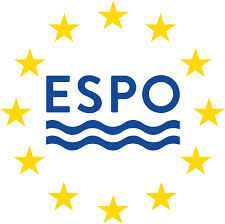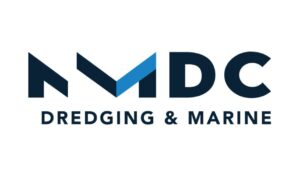EU WFD Navigation Task Group
What is the EU Water Framework Directive?
The EU Water Framework Directive 2000 (WFD) is arguably the most important, far-reaching, water legislation ever to emerge from the EU. It was transposed into law in EU Member States at the end of 2003. A primary purpose of the Directive was to update and consolidate existing piecemeal EU water legislation: it established a new, integrated (ecosystem-based) approach to water protection, improvement and sustainable use. Some of the main aspects of the Water Framework Directive are summarised below, but more information can be found on the European Commission’s website.
Scope of the WFD
The WFD applies to all water bodies, including rivers, estuaries, coastal waters, and man-made water bodies (e.g. canals, docks). These water bodies are managed via a series of national or international ‘river basin districts’.
WFD Objectives
In addition to chemical water quality targets, ecological objectives have been set for each water body. A key aim of the WFD is for all water bodies to achieve ‘good ecological and chemical status’. The original target for achieving good status was 2015, but further deadlines are set for 2021 and 2027. For water bodies designated as heavily modified (HMWB) or artificial (AWB), the respective targets are good ecological potential and good chemical status. Good ecological potential is a different ecological objective that takes into account the physical modifications necessary to sustain specified human uses such as navigation. Another important part of the WFD is an extensive programme of monitoring of surface and groundwater bodies. The results of this monitoring are being used to assess achievement of the WFD objectives.
WFD Programme
The WFD has a strict timetable. Following several years of preparatory work, the first WFD river basin management plans were published in most Member States between end 2009 and mid 2010. These plans set out the ‘programmes of measures’ which are required to achieve good ecological and chemical status in water bodies ‘at risk’ of failing to meet these targets. The first Programme of Measures to achieve good status (or potential) had to be in place by 2012 with the intention of achieving the objectives by 2015. Progress with WFD implementation is reviewed on a six-yearly basis and there are two further WFD planning cycles – up to 2021 and 2027.
Exemptions
Articles 4(4) and 4(5) of the Directive make provision for exemptions in the form of extended deadlines or the setting of less stringent objectives. Thus, assuming that the strict criteria for applying the exemptions are met, some measures may be delayed until future planning cycles. This provision may be particularly important where there are high levels of uncertainty – for example regarding the cause of a problem or the likely success of a particular measure in delivering the necessary improvement.
Economic Considerations
Economic considerations play an important role in WFD decision-making and any ‘measures’ or actions required to achieve the WFD targets must be shown to be cost-effective and not disproportionately costly.
Priority Substances Daughter Directive
The priority substances ‘daughter Directive’ to the WFD was adopted by the Environment Council in October 2008 and had to be transposed into law in EU Member States by July 2010. This Directive delivers the requirements of Article 16 of the WFD with regard to the need for measures to progressively reduce discharges, emissions and losses of priority substances and to cease or phase out discharges, emissions and losses of priority hazardous substances. Environmental quality standards (EQS) have been developed to measure the chemical status of surface waters.
Implications for Navigation
The WFD and the daughter Directive can have significant implications for navigation, both for ongoing port activities such as dredging and disposal, and for new development proposals. The potential implications of the WFD were set out in a paper presented to PIANC’s 31st Congress, which provides an overview of the WFD HERE. A number of other early papers dealing with different aspects of the WFD and the daughter Directive were presented to a 2007 international conference entitled Navigation and the Water Framework Directive. In particular, a paper which discusses the potential implications of the WFD for new navigation-related physical modifications can be found HERE. Several years later, these papers remain valid.
Since 2003, PIANC has chaired and hosted the Water Framework Directive Navigation Task Group. Originally a meeting of five associations, it now comprises a ‘thematic cluster’ of 14 organisations. In addition to PIANC, the following organisations participate in the Group’s activities, between them representing a wide variety of commercial and recreational, maritime and inland navigation interests:
The Danube Commission and the International Sava River Basin Commission are also invited to participate in Task Group activities as observers.
Aims and Objectives
The Task Group aims to:
- raise awareness of the WFD and its implications for ports, harbours, commercial and leisure navigation, and dredging,
- develop an understanding, through exchange of knowledge and experience, of the implementation process in different EC Member States, and
- through participation in CIS activities and the provision of relevant information, to try to ensure that the Directive is implemented in a consistent manner (ie. that a level playing field is achieved) insofar as navigation interests are concerned.
In pursuit of these objectives, the Task Group participates in several CIS activities, has prepared a number of associated Position Papers and Discussion Documents. In the first years of WFD implementation, the Task Group also organised various Conferences and Workshops.
Papers Prepared and Conferences Organised by the WFD Navigation Task Group
When work is being carried out under the CIS process or when the European Commission consults on a particular issue which is of importance to the navigation sector, it has often proved useful for the Task Group to develop a ‘common position’, summarising the views of the sector. The process of discussing the issues raised and agreeing a way forward through the Task Group has been very successful – both in raising awareness of various WFD-related issues within the sector, and in allowing any differences in views to be identified and resolved. The sector has thus been able to prepare and present a single response to the Commission on a number of key WFD issues.
Amongst the discussion and position papers prepared in this way by the Task Group are the following:
Proposal for a Regulation of the European Parliament and of the Council on Nature Restoration. WFD Navigation Task Group. Position Paper. February 2023.
In 2022, a proposal for a new European nature restoration law was published. This ambitious law would make it mandatory for European Member States to implement a staged restoration of up to 90% of a wide range of different habitat types by 2050, and to re-establish up to 100% of lost habitats by the same date. In the meantime, deterioration in the condition of all such habitats will need to be prevented.
Depending on how it is implemented, such a new law could potentially have significant implications for many port and waterway maintenance activities as well as for new navigation infrastructure development projects. The EU Water Framework Directive Navigation Task Group has therefore prepared a Position Paper that explains the concerns of the sector, suggests some pragmatic solutions to help reduce potential delays, extra costs, etc., and seeks clarification on a number of currently unanswered questions.



























